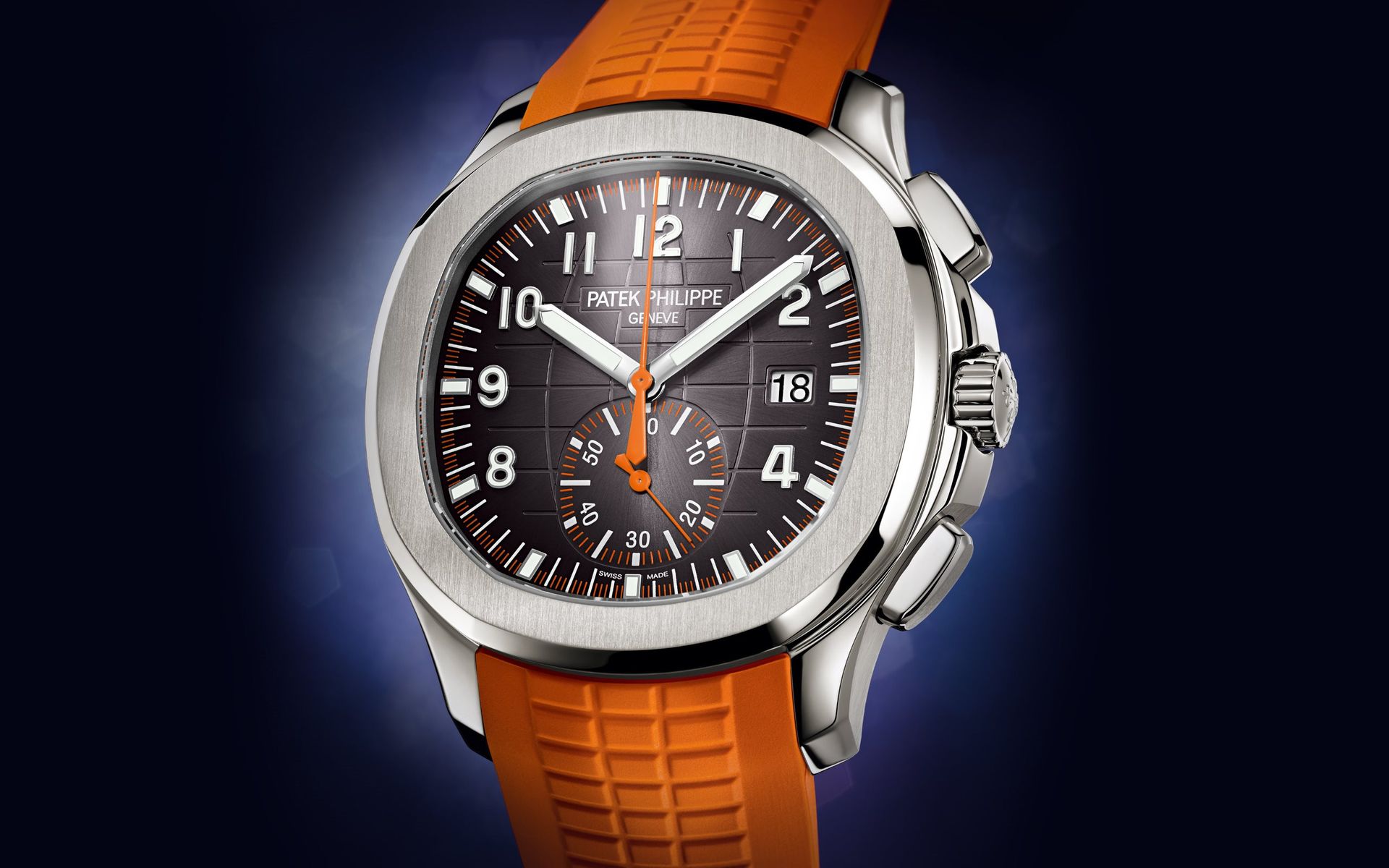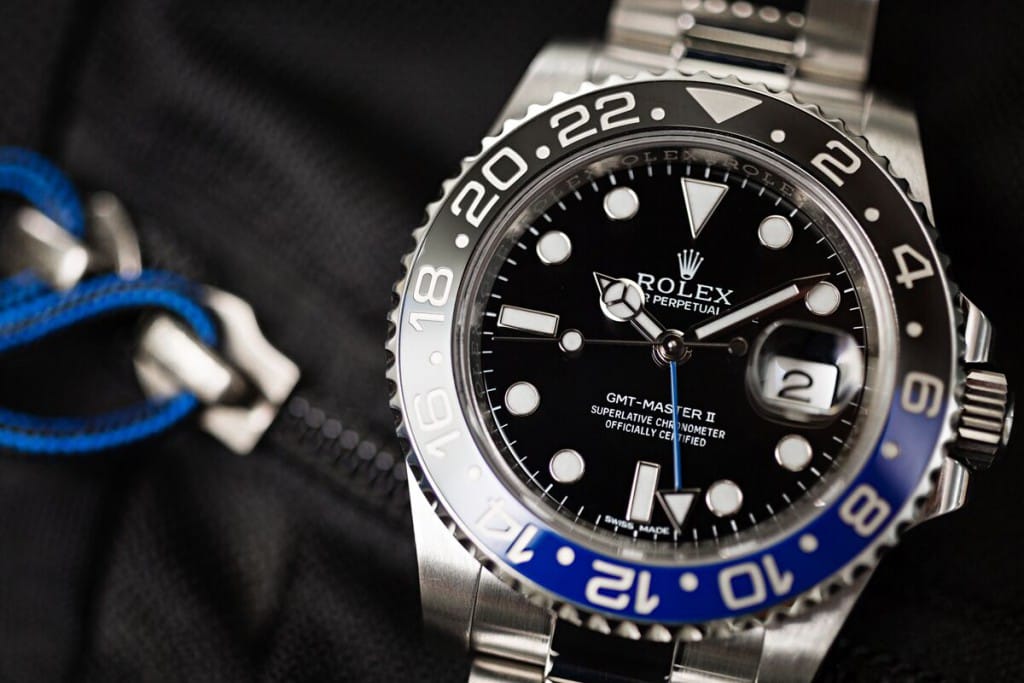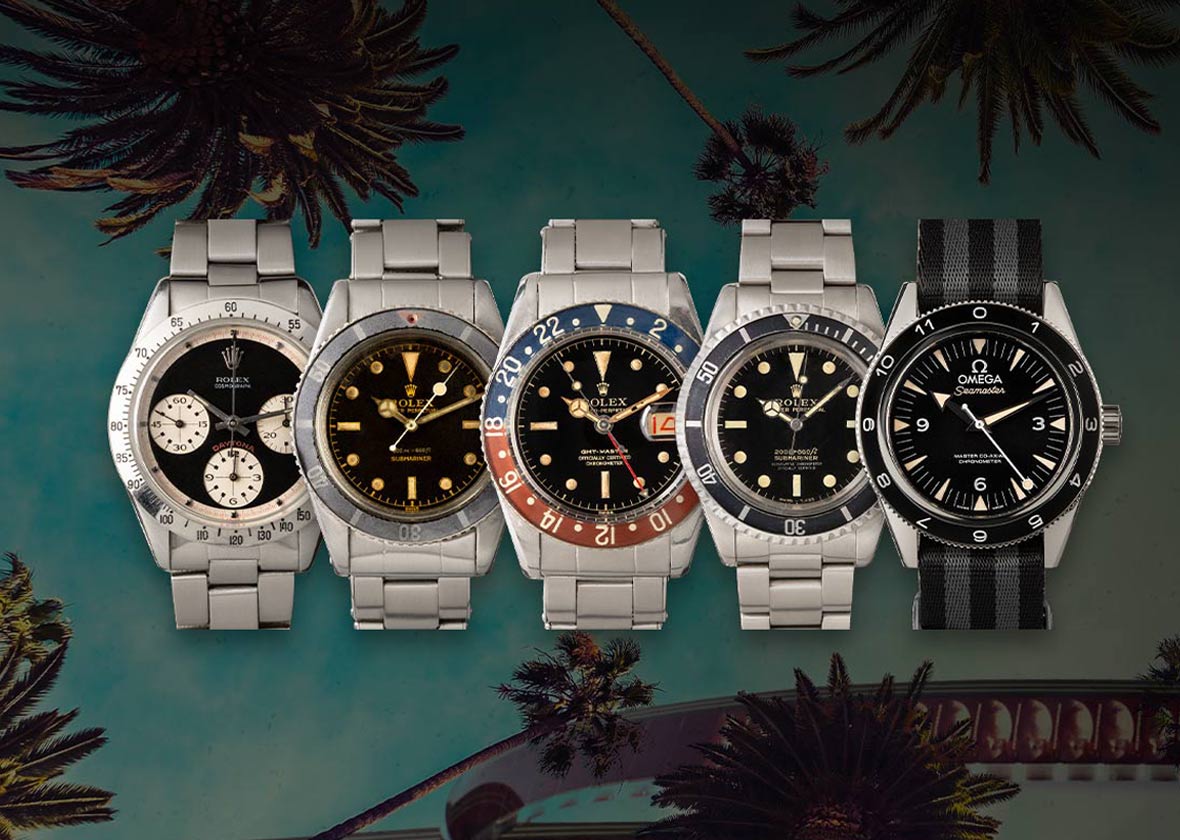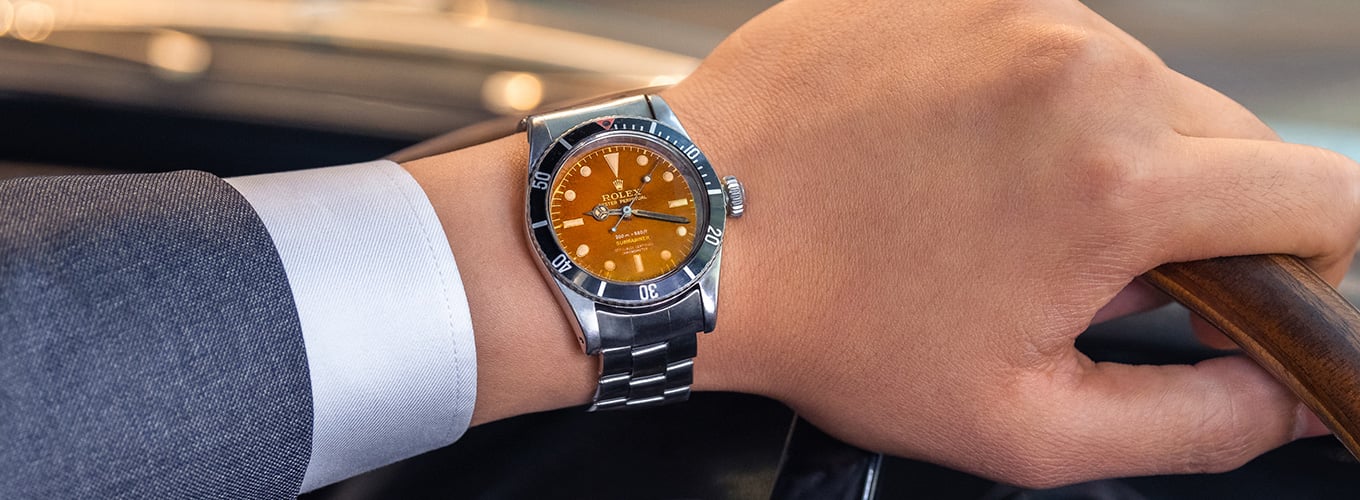
For anyone with an interest in rare, extraordinary, or classic cars, the annual RM Sotheby’s Monterey auction is the must-attend event of the year. Slated to take place August 15-17, 2019 at the Monterey Conference Center in Monterey, California, the 2019 RM Sotheby’s Monterey auction features an exceptional lineup of automobiles from the most renowned car marques, including some models heralded as “the most famous car in the world” and the “the greatest automobile ever created.”
Bob’s Watches is proud to announce its collaboration with Sotheby’s to present “Watches Online: The Driver’s Collection” – an exclusive sale of timepieces to be offered alongside the 2019 RM Sotheby’s Monterey auction. As one of the world’s leading purveyors of rare, extraordinary, and vintage timepieces, Bob’s Watches will supply the event with a lineup of 18 exceptional examples that will be on display at the RM Sotheby’s Monterey event and available for purchase in an online auction, with bidding taking place from August 14-20, 2019.
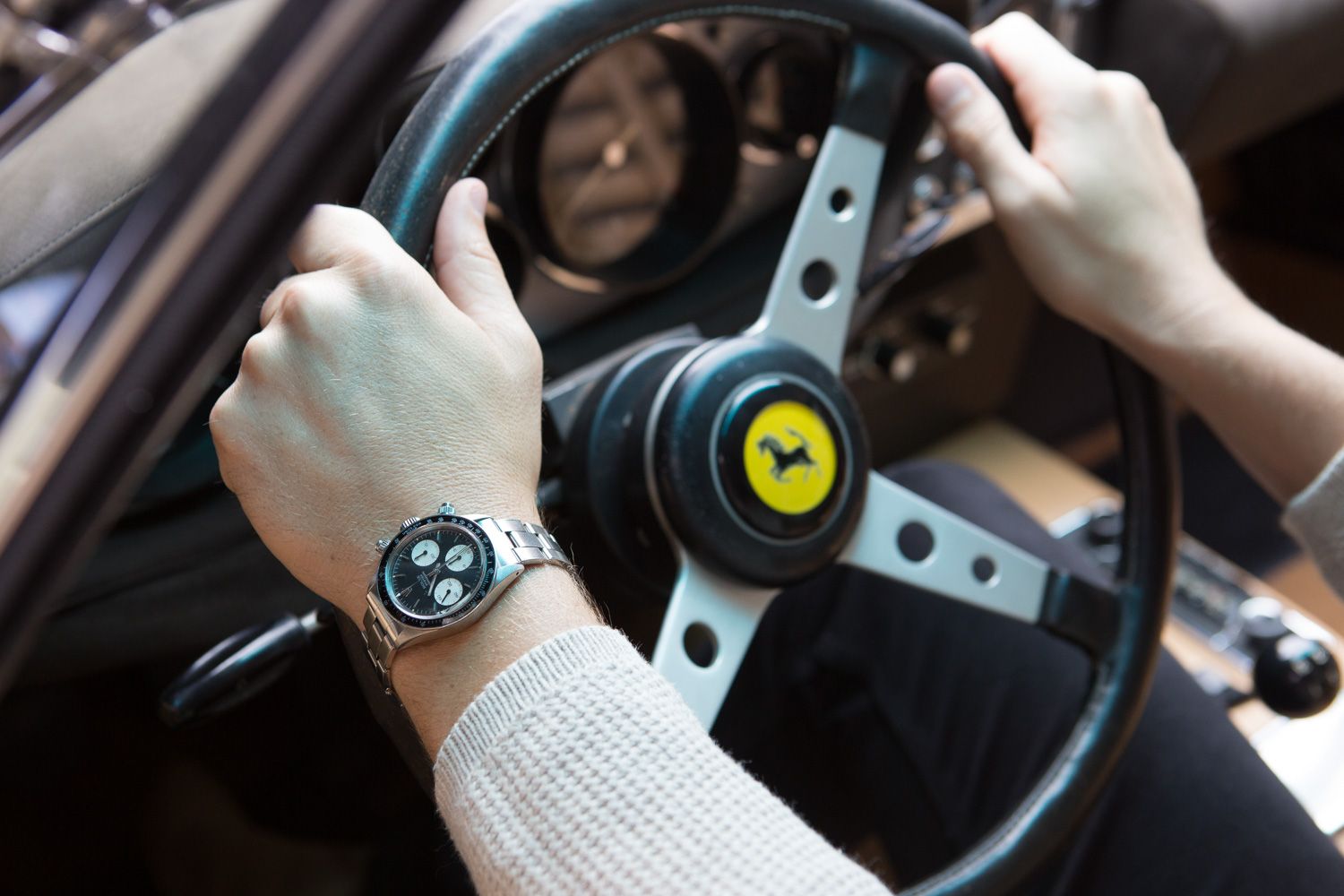
The exclusive sale features a specially curated collection of timepieces including vintage Rolex Daytona and Submariner references, spanning decades of history, that were all inspired by a select group of cars offered by RM Sotheby’s at the Monterey event this year. The highly collectible watches range from historically significant pieces that shaped the entire horology industry, to today’s most coveted luxury watches.
A love of cars and mechanical watches often go hand-in-hand. While these two machines differ significantly in size, at their core both encompass the expert balance of beautiful design, intricate mechanics, and hands-on utility. Below we have put together a complete list of the 18 watches and the incredible cars that inspired the curated Drivers Collection sale.
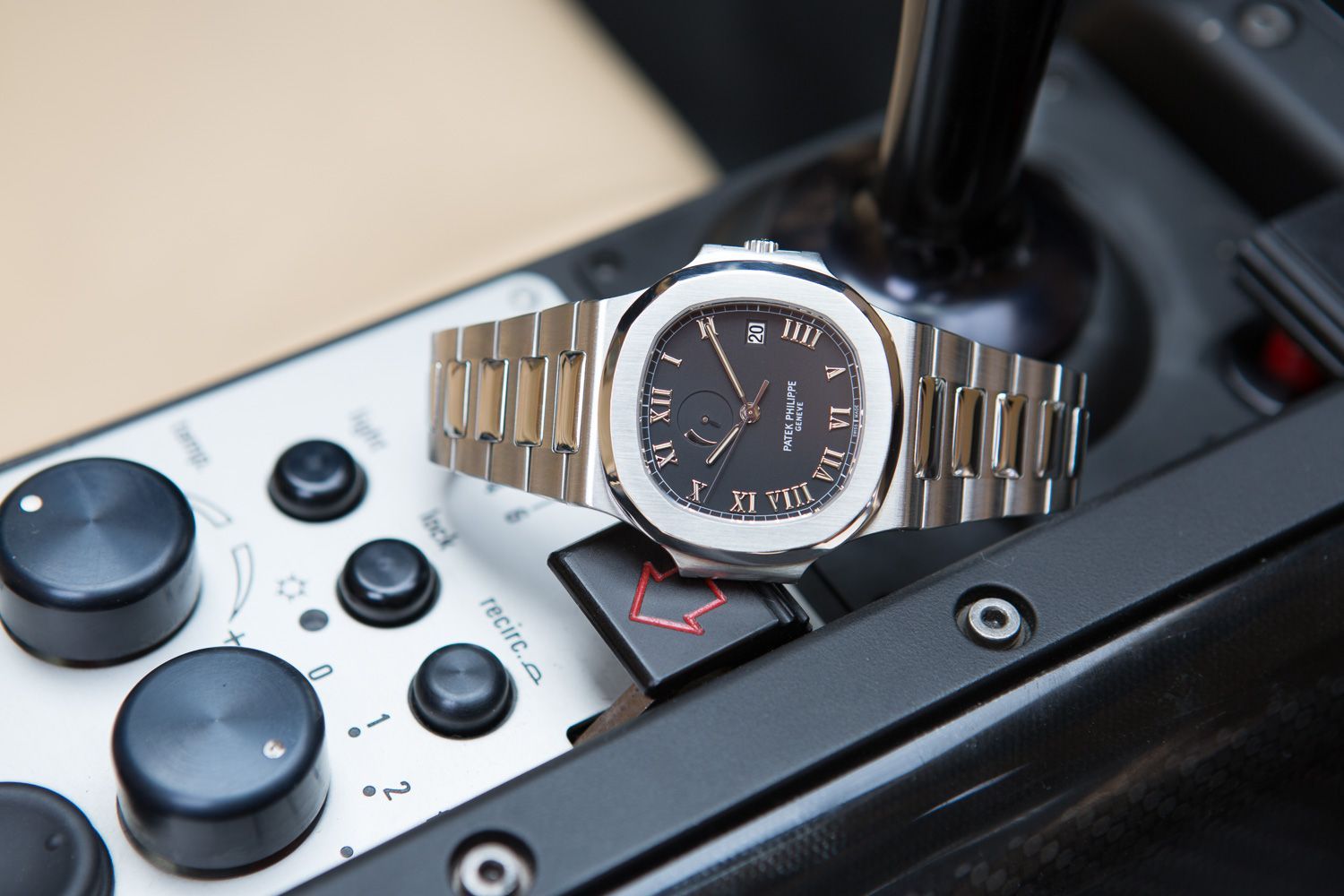
Rolex Submariner 6538 “James Bond” + 1965 Aston Martin DB5 “Bond Car”
In 1964, Goldfinger hit the silver screen as the third film in the James Bond series. This was also the third time Sean Connery reprised his role as 007 but another star graced the movie for the first time – the Aston Martin DB5 car. That was the beginning of a relationship between Aston Martin and James Bond films that would eventually span a dozen movies over five decades.
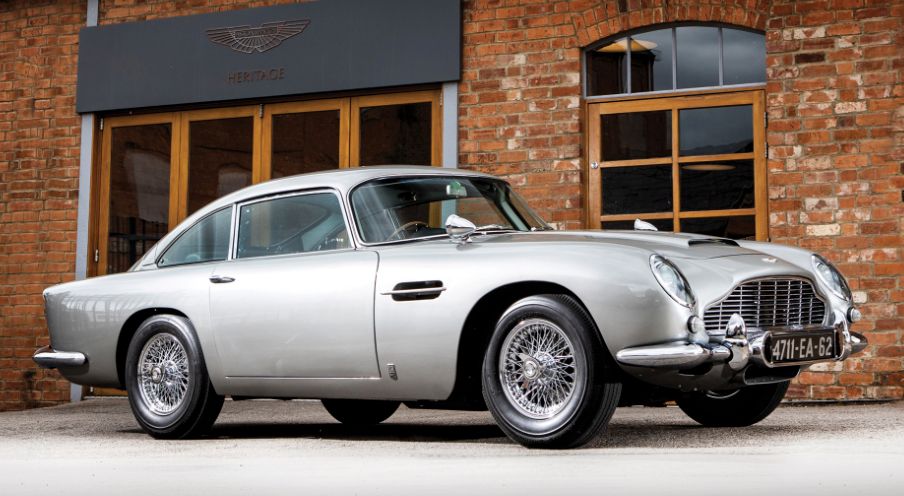
Ahead of the fourth James Bond flick Thunderball, Eon Productions purchased two DB5 saloons for pre-release promotional purposes, including this chassis nos. DB5/2008/R example. While the DB5 in Goldfinger was family fitted with gadgets befitting of a super spy, those modifications were done by the film’s production designer Ken Adam and only appeared realistic on screen thanks to special effects man John Stears’ movie magic. On the other hand, the Aston Martin DB5/2008/R had its 007 gadgets installed by Aston Martin, designed and built to function on-command off camera too. The car underwent a complete restoration in 2012, which included refurbishment of all 13 original special-effects modifications.
The association between Rolex and James Bond movies goes back even further than that of Aston Martin, when 007 straps on a Submariner 6538 in the very first film, Dr. No (1962). Bond continued to wear the Submariner 6538 over the next three films: From Russia with Love (1963), Goldfinger (1964), and Thunderball (1965).

The Rolex Submariner 6538 “James Bond” is an early example of the company’s now-famous diving watch, first introduced in 1955 and only produced until 1959. The watch was equipped with a larger winding crown (hence its other nickname, the “Big Crown Submariner”), in addition to a new Caliber 1030 automatic movement inside the case. In fact, the 6538 was the first reference to announce its chronometer certification on the dial, denoted within the four lines of text on the face of the watch.
Ian Fleming, the author who wrote the James Bond novels, explicitly penned that James Bond drove an Aston Martin car and wore a Rolex watch. And thanks to Eon Productions, that vision continued from the original book pages to the big screen.
Patek Philippe Nautilus 3710/1A + 1994 McLaren F1 ‘LM-Specification’
When renowned car designer Gordon Murray was told “to build the perfect production sports car, without limitations,” he did just that in the form of the McLaren F1. Production began in 1992 and McLaren only built 64 production examples of the F1 road car through 1997. Although the F1 was conceived and developed as a road car, dedicated clients of the brand eventually persuaded the British automaker to make versions built to racing specs. The F1 GTR soon joined the lineup, and it went on to win a slew of races including the 1995 Le Mans. That victory spurred a limited batch of commemorative road-capable cars dubbed the F1 LM.

With a total output of 106 units (64 production road cars, 28 F1 GTR race cars, five F1 LM examples, two F1 GTs, and seven prototype/development cars), the McLaren F1’s rarity matches its “most celebrated modern supercar” status. However, this particular example, serial no. 018 (built in 1994 and sent back to the factory by the second owner in 2000 to begin a series of upgrades to LM specifications) is exceedingly rare as it is one of only two F1 road car examples modified by the McLaren factory to LM specifications. In fact, according to a 2006 report by McLaren Special Operations (MSO), “the car is estimated to have more downforce than the Le Mans–winning 1995 GTR race car.”
Designed by legendary watch designer Gerald Genta and launched by Patek Philippe in 1976, the Nautilus is one of the most important watch designs of the 20th Century. According to the designer himself, it took him about five minutes to sketch out the concept while at a restaurant during the Basel Trade Fair. The Nautilus watch may have taken a matter of minutes to draw, but its impact on the watch industry is still going strong more than four decades later. It was particularly groundbreaking for its time because the Nautilus was a brash stainless steel sports watch equipped with a simple time and date movement, which was audaciously priced as much as a solid gold complicated dress watch. Today, a stainless steel Patek Nautilus is perhaps the most difficult current production luxury watch to source since demand far outpaces supply.
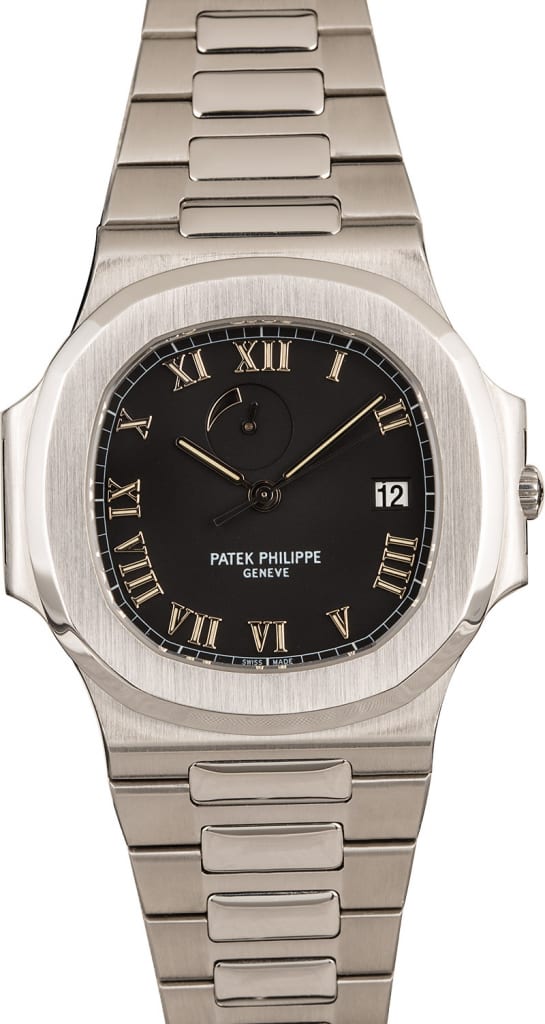
For the first two decades of its history, the porthole-inspired case of the Nautilus sports watch only housed simple time and date dials. But that all changed in 1998 when Patek Philippe presented the Nautilus 3710/1A with a power reserve indicator, which acts similarly to a gas gauge to tell the wearer how much “fuel” is left in the watch. Along with the power reserve indicator, the ref. 3710 also brought back the “Jumbo” 42mm case size of the inaugural Nautilus rather than the mid-size 37.5mm cases that had taken over the collection. Patek phased out the Nautilus 3710/1A in 2005, making this piece a rare example from a relatively short and limited production run. The 3710 is particularly important because it is the reference that paved the way for future Nautilus models with additional complications.
Characterized by refined yet sporty designs, technical innovations, and ultra exclusivity, the McLaren F1 “LM Spec” and the Patek Philippe Nautilus 3710/1A have both played a hand in shaping the modern landscape of their respective fields.
Rolex Daytona 6263 + 1971 Ferrari 365 GTB/4 Daytona Berlinetta by Scaglietti
When it made its debut at the 1968 Paris Salon, the Ferrari 365 GTB/4’s design stood out for its stark difference to its predecessors, boasting more angular lines and aggressive styling. The design shift proved to be a solid strategy for the automaker, as the newest twelve-cylinder grand tourer Ferrari quickly gained favor within the automotive community. Another thing the car gained was the nickname “Daytona” thanks to Ferrari’s epic 1-2-3 sweep of the 24 Hours of Daytona the year prior. This particular Ferrari 365 GTB/4 “Daytona” was built in 1971 and has been meticulously cared for by four owners.
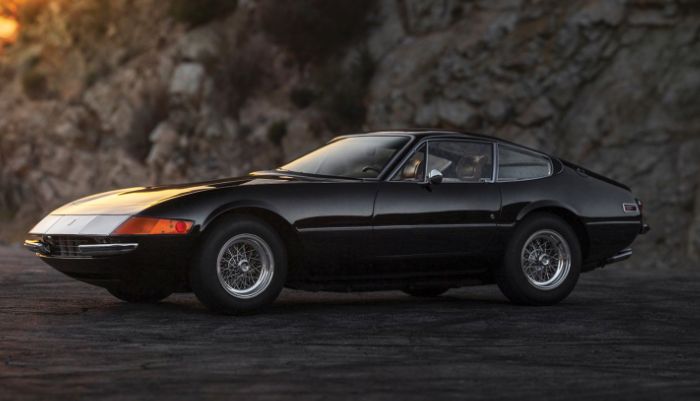
When Rolex launched its new chronograph model in 1963, the Swiss watchmaker dubbed the watch “Cosmograph.” However, it was not long before Rolex officially added the name “Daytona” to the watch to emphasize the company’s ties to the famous Speedway racetrack in Florida and the Cosmograph Daytona’s motorsport-inspired spirit. The Rolex Daytona 6263 model was introduced in the early 1970s and it was one of the last stainless steel manually-wound Daytona chronographs in production (along with its steel-bezel sibling reference) until Rolex replaced it with an automatic version in 1988. This particular ref. 6263 is especially intriguing (and collectible) for the lack of the Daytona label anywhere on the dial despite it belonging to the famed Rolex Daytona family.
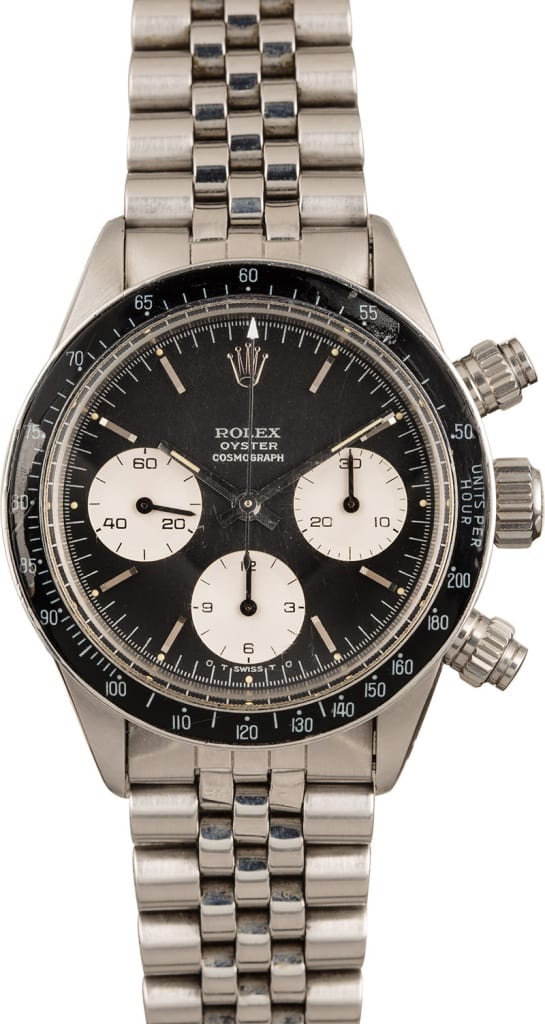
Both named after the “World Center of Racing” and both fiercely sought-after by collectors, the Ferrari Daytona and the Rolex Daytona make quite the adrenaline-fueled combination.
Rolex Submariner 1680 + 1962 Ferrari 250 California SWB Spider by Scaglietti
In the late 1950s, a California-based Ferrari dealer named John Von Neumann noted to the U.S. Ferrari agent that a convertible 250 GT Berlinetta Tour de France would be an ideal model to drive around in the Golden State. The car would retain its performance-bred specs, yet featured a stylish drop-top design with space for two plus luggage. The dual purpose-nature of the Ferrari California Spider was emphasized by the fact that not only was it the must-have car among the celebrity-set of the era, but it also raced at the 1960 24 Hours of Le Mans and the 1961 12 Hours of Sebring. Ferrari only made 106 Californias from 1957 to 1963; the first 50 with a long-wheelbase 250 GT chassis and the remaining with a short wheelbase (SWB) like this Rosso example here from 1962 – number 55 out of 56.
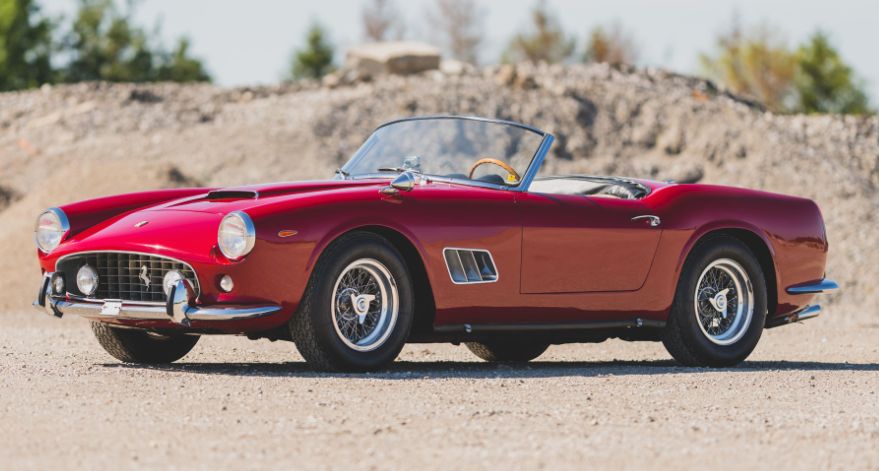
Rolex first launched the Submariner in 1953 as a watch built explicitly for use underwater by scuba divers. For the first 16 years that the Submariner was in production, Rolex stayed true to the Submariner’s tool watch status by enhancing design aspects that would serve divers – such as increased water resistance and better dial legibility – first and foremost. However, in 1969, Rolex introduced the very first Submariner with a date complication, signaling a turn towards a wider consumer base outside the scuba diving crowd. The very first Submariner Date reference was the 1680 and the earlier examples (produced until 1975) included the “SUBMARINER” name in red letters on the matte black dial, giving way to the “Red Submariner” nickname.
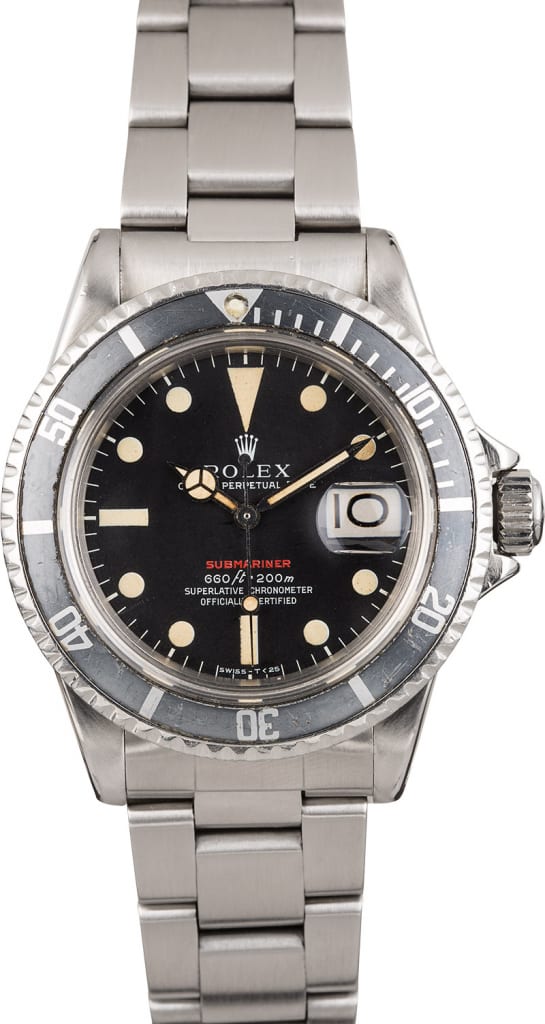
Both the Ferrari 250 California SWB Spider and the Rolex Submariner Date 1680 managed to retain the professional specifications of their forebearers, yet their respective brands added just the right modifications to appeal to a broader audience. Plus, the duo also has the benefit of flaunting their signature red shades.
Omega Speedmaster 2998-1 + 1939 Porsche Type 64
One of the most historically important cars ever produced, this Porsche Type 64 is one of three examples made and the only to still exist. After working on the Volkswagen Type 1 (aka Type 60), Ferdinand Porsche was ordered by the National Socialist Motor Corps (NSKK) to develop a sports car based upon the Beetle design to compete in a race from Berlin to Rome. The race never happened due to World War II but the first Type 64 did emerge.
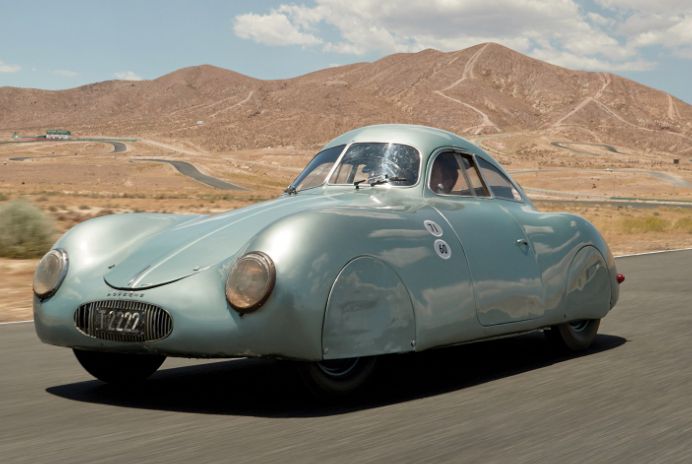
Ferdinand Porsche and later his son, Ferry Porsche used this example of the Type 64 as their personal car. When Porsche moved the company to Gmünd, Austria, in 1944, the Type 64 went along. Ferry Porsche had the car restored and applied the new wide-font scripted Porsche badge to the car’s nose. While the Porsche 356 roadster was the first commercial model of the company, it’s clear that the sleek and aerodynamic Type 64 served as a major design inspiration – not only for that model, but also for the long line of Porsche models that would later materialize.
As the second generation of the Speedmaster, the Omega Speedmaster 2998 model cemented a handful of design details that would go on to become signatures of the famed chronograph. For instance, the watch included a black bezel insert with a tachymeter scale in white rather than the tachymeter engraved steel bezel of the very first Speedmaster. Furthermore, the hands evolved from the original triangular-tipped “Broad-Arrow” hands on the inaugural Speedmaster to thinner Alpha-style on early models of the Ref. 2998 to simplified baton-style hands-on later models of the Ref. 2998.
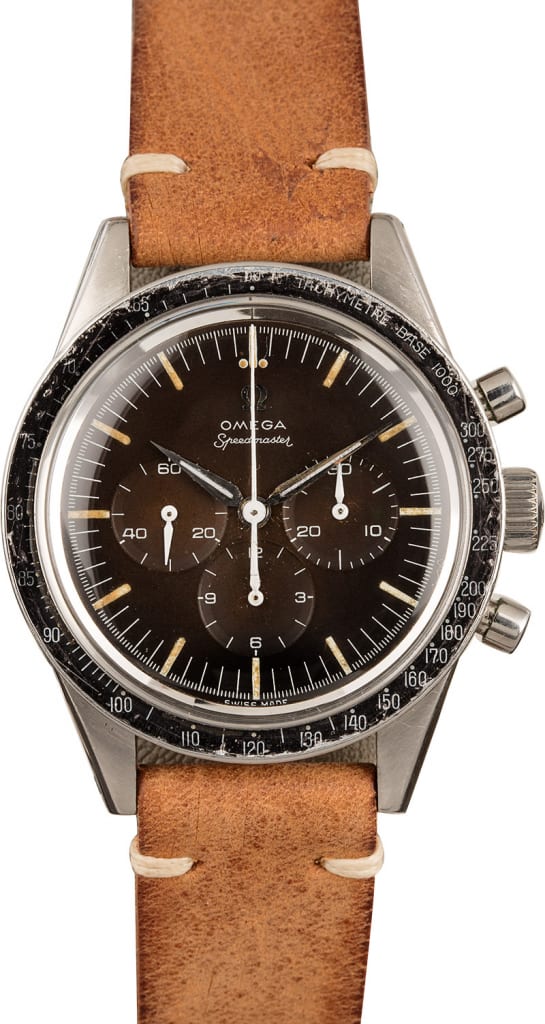
Omega produced the Speedmaster 2998 from 1959 until 1963, and during that time the company made eight sub references starting with 2998-1 seen here. Importantly, the Ref. 2998 was also the first Speedmaster reference to journey to space worn by Wally Schirra during the Mercury 8 flight in 1962. This was, of course, the onset of the Speedmaster’s long association with NASA and space exploration, including the historic Apollo 11 Lunar Landing in 1969.
The Type 64 is the predecessor to all contemporary Porsche cars, and the Omega ref. 2998 is the archetype to the modern Speedmaster. Both foundational models served as the blueprints for the design codes of their respective brands, inspiring modern and instantly-recognizable versions that are still sold today.
Rolex Explorer 1016 + 1966 Ferrari 275 GTB Alloy by Scaglietti
In 1964, Ferrari unveiled the 275 GTB to replace the legendary 250 series. The automaker ensured that the 275 GTB was the most cutting-edge Ferrari road car available at the time, complete with a four-wheel independent suspension and a rear-mounted five-speed transaxle gearbox to improve the car’s weight distribution. Both road and competition ready, the dual-purpose Ferrari 275 GTB was equally suited to city lanes and race tracks. This particular 275 GTB from 1966 boasts an aluminum body, which was the most coveted factory option, thanks to the material’s lightweight nature and ties to competition cars.
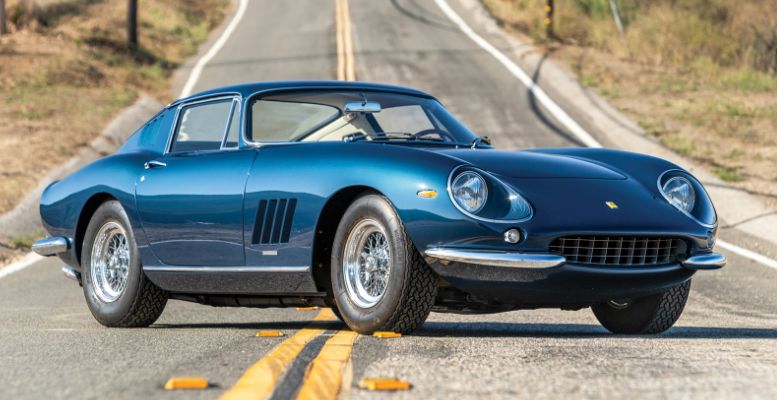
Rolex introduced the Explorer 1016 in 1963 to replace the preceding Explorer ref. 6610, and the watchmaker went on to manufacture this reference for roughly 30 years. Due to its long production run, the Explorer 1016 exists with several dial finishes and this particular example from 1979 features the sought-after matte black dial. Those familiar with Rolex watches will know that the Explorer line was inspired by Sir Edmund Percival Hillary and Tenzing Norgay’s historic summit of Mount Everest in 1953. As such, the watch had to not only look good but had to perform under extreme conditions too, and Rolex continuously sought to improve the collection over the years.
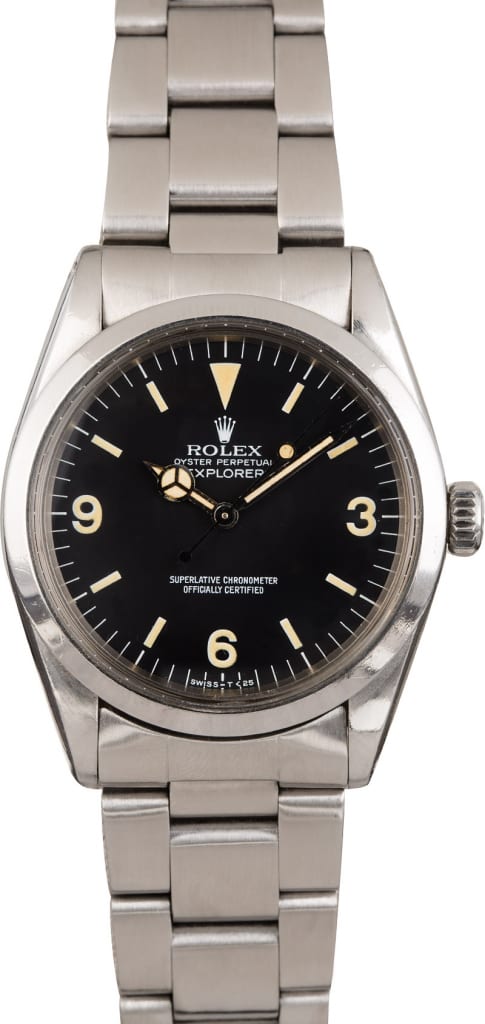
The Explorer 1016 boasted a water resistance rating of 100 meters – double that of the previous 6610. Furthermore, the dial offered exceptional legibility thanks to the lume painted hour markers, including the signature 3, 6, and 9 numerals, and lume coated Mercedes-style hands. In true Rolex fashion, under the hood of the Explorer 1016 is a robust chronometer-certified automatic mechanical movement that will keep running as long it is worn.
Both born in the 1960s and both merging top-notch performance and perfectly proportional design, the Ferrari 275 GTB and the Rolex Explorer 1016 have evolved into collectible classics in their respective spaces.
Rolex GMT-Master 1675 + 1985 Ferrari 308 GTS Quattrovalvole
Ferrari introduced the 308 in 1975 to replace the Dino, and in 1982, the automaker unveiled the 308 GTS Quattrovalvole at the Paris Motor Show with four valves per cylinder. The 308 Quattrovalvole was available in a fixed-roof GTB version and a targa-style GTS version with a removable black vinyl roof section, as seen here. This example is finished in Rosso Corsa (aka racing red) over a tan leather interior – the quintessential Ferrari style. The Ferrari 308 cemented its place in popular culture as the car Thomas Magnum (played by Tom Selleck) drove around for eight seasons of the popular television series Magnum, P.I. Several 308 GTS cars were used for the show from 1980 to 1988, including a 308 GTS QV for the last few seasons.

Rolex launched the GMT-Master 1675 in 1959 to take over the inaugural 6542 model. The second generation of Rolex’s famous pilot’s watch was in production until 1980. Due to its long production run, the GMT-Master 1675 can be found with a wide assortment of variations, but the red and blue “Pepsi” bezel, as seen here is the ultimate classic choice. Similar to the Ferrari 308, the GMT-Master 1675 also had a starring role in Magnum, P.I., joining the show in season 4 based on a storyline about Magnum inheriting his father’s GMT-Master Pepsi when he was a young boy. Magnum P.I. wore the GMT-Master 1675 throughout the remainder of the series and Tom Selleck even kept the watch after the series finale.
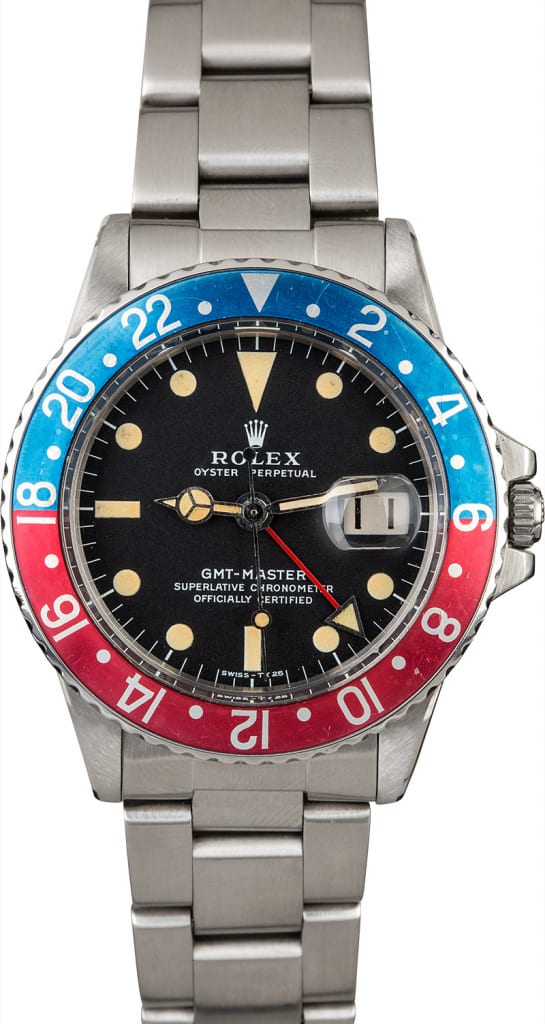
Flaunting their classic colorways, the Rosso Corsa Ferrari 308 GTS Quattrovalvole and the Pepsi Rolex GMT-Master 1675 was a combination popularized by Thomas Magnum and still beloved by legions of fans to this day.
Rolex Explorer II 1655 + 1965 Ford GT40 Roadster Prototype
The Ford GT40 was famously developed with the sole purpose to beat Ferrari. And it cemented its place in automotive history by winning the 24 Hours of Le Mans for four consecutive years from 1966 to 1969. But before the production examples achieved those victories, there were the model’s early development cars: twelve prototypes in total, including this eighth example (GT/108), which also happens to be the first roadster prototype to join after the first seven coupes. Completed in 1965 in Slough, UK, GT/108 was shipped to Shelby American in Venice, California for “necessary repairs and mods,” after which the car went on to conduct some promotional duties and finally as a test car.
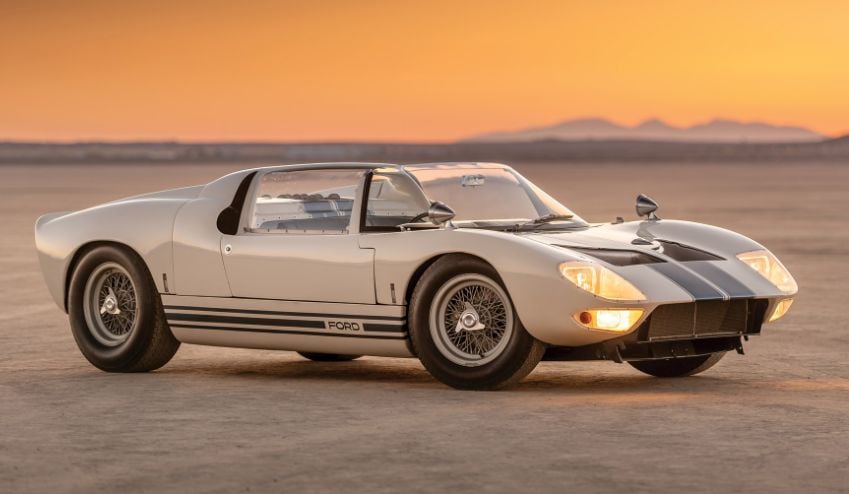
Rolex introduced the Explorer II ref. 1655 in 1971, purposely built to serve the spelunking community. The watch was equipped with a 24-hand and a fixed 24-hour marked bezel to allow wearers to differentiate between A.M. and P.M. hours after extended periods inside dark caves. The Explorer II 1655, which was produced until 1985, is often referred to by the nickname “Freccione” (Italian for “arrow”) thanks to the shape of its large orange 24-hour hand. This particular example dates back to 1984 and features the original MK5 matte black dial.
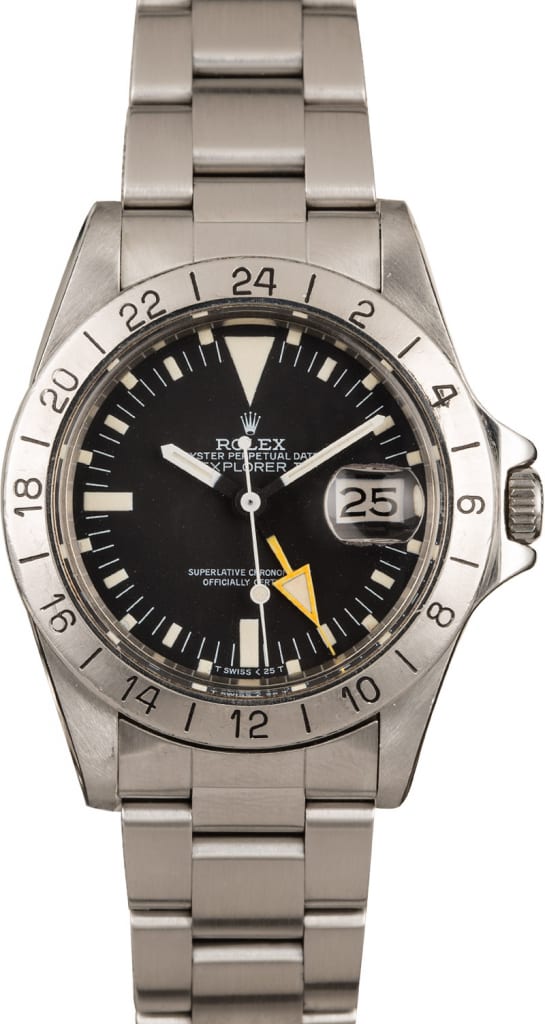
Aside from the fact that the Ford GT40 and the Explorer II were each built with specific goals in mind, they also share a link to Steve McQueen. The Rolex Explorer II 1655 is frequently called the “Steve McQueen” since it was once erroneously reported that the King of Cool wore one. However, it turns out that McQueen did not actually own a ref. 1655, and instead actually wore a Submariner. Nevertheless, the nickname stuck. McQueen used a Gulf liveried Ford GT40 as a camera car for his Le Mans (1971) film to keep up with the pace of the racing shots. That very same car fetched $11 million at auction in 2012.
Rolex Submariner 16610LV + 1973 Porsche 911 Carrera RS 2.7 Touring
Introduced at the 1972 Paris Auto Salon, the Porsche 911 Carrera RS (“Rennsport” or racing sport in German) was an upgraded version of the 911 S, complete with a 2.7-liter engine, larger wheels, flared rear quarter panels, and a “ducktail” rear spoiler, to compete in the World Championship of Makes. The first group of 500 cars sold out so quickly that the automaker had to produce two more batches. The latter two batches had a majority of “Touring” models, as seen here. This example of the Porsche 911 Carrera RS was delivered in 1973 with pale yellow paint, and while the car retains its original color, green wheels and matching negative Carrera script decals have been added.
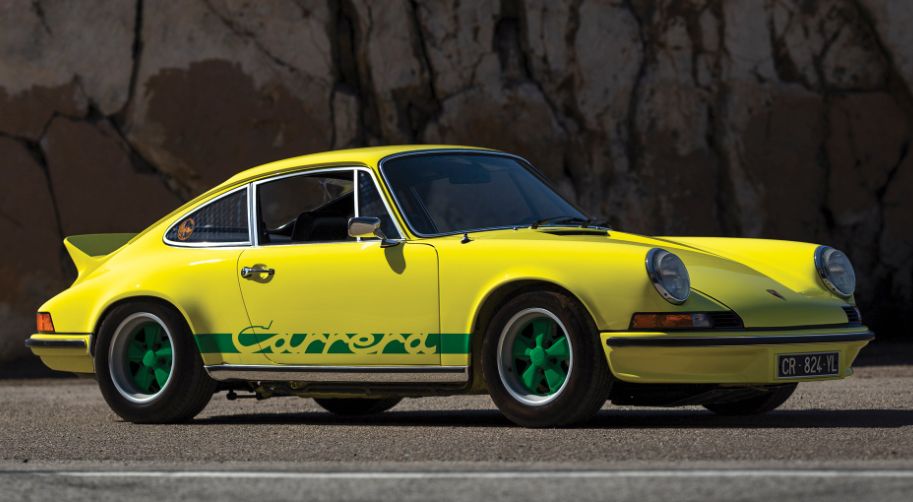
To commemorate the 50th anniversary of the Submariner model in 2003, Rolex introduced the Submariner 16610LV with a green colored aluminum bezel and a black dial. This was the very first time Rolex fitted a green bezel (or “Lunette Verte” in French) on a Submariner; as such, the 11610LV has since picked up the “Kermit” nickname among collectors. Aside from the colorful bezel, the watch retains the familiar Submariner design details from the stainless steel 40mm Oyster case (water-resistant to 300 meters) to the black dial with luminous Mercedes-style hands and hour markers. Rolex ceased production of the Submariner 16610LV in 2010.
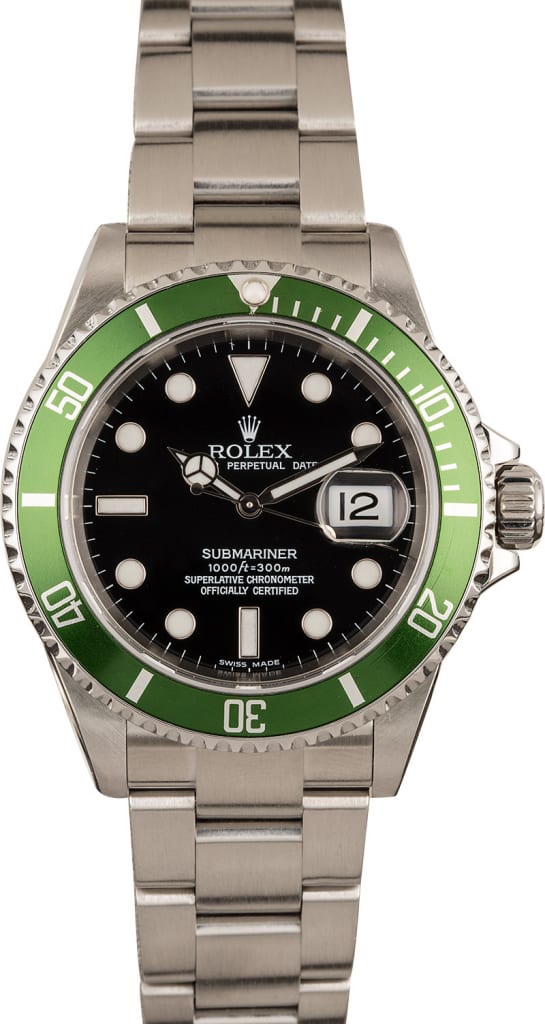
The Porsche 911 RS Touring and the Rolex Submariner are some of the most iconic products in modern history. Yet, for those who like to stand out, the yellow and green 911 RS and the green Submariner ref. 16610LV offer vibrant and sporty takes on the classics.
Heuer Autavia 1163 + 1964 Shelby 289 Cobra
In 1961, retired race car driver Carroll Shelby struck a deal with British company AC Cars to install a new, compact Ford V-8 engine into small roadsters at his shop in Venice, California. And the legendary Cobra was born. This particular CSX 2216 left the UK in 1963 headed for Shelby American, where it received its Ford power train, including a 271 hp, 289 cu. in. Hi-Po V-8 engine, a four-speed manual transmission, and a Powr-Lok limited-slip differential. Under a few owners, the car underwent a new paint job and modifications over the years; yet it recently underwent a complete restoration to its original post-Shelby American form.
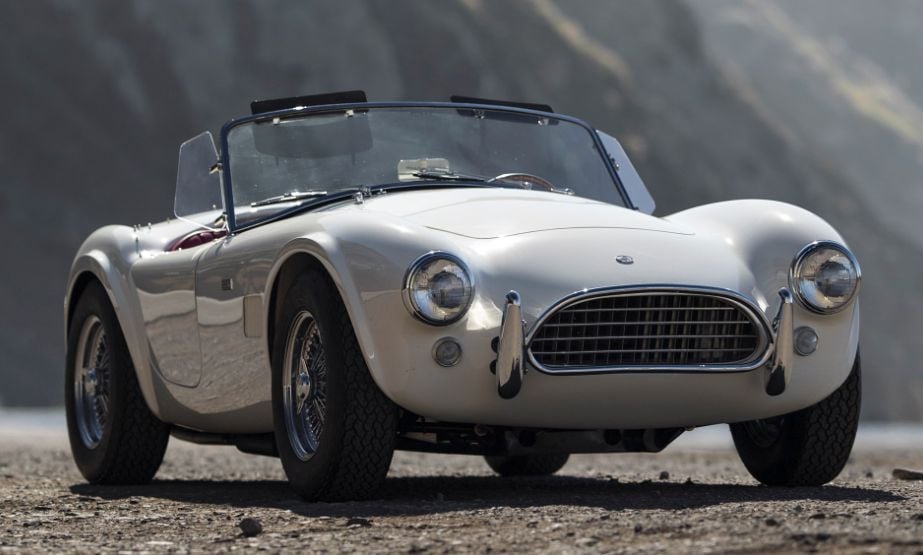
The Heuer Autavia 1163 was one of the first chronographs to be powered by the pioneering Caliber 11 self-winding chronograph movement. That groundbreaking automatic chronograph movement was developed through an alliance between Heuer, Breitling, Hamilton, Dubois-Depraz, and Buren. This particular example with a white dial, black sub-dials, and blue chronograph hand is nicknamed the “Jo Siffert” because the late legendary Swiss race car driver (and Heuer’s first official brand ambassador) wore one. The Heuer Autavia 1163 “Jo Siffert” features a stainless steel case with a pair of chronograph pushers on the right-hand side and the winding crown on the left – a telltale sign that the Caliber 11 movement sits inside the watch.
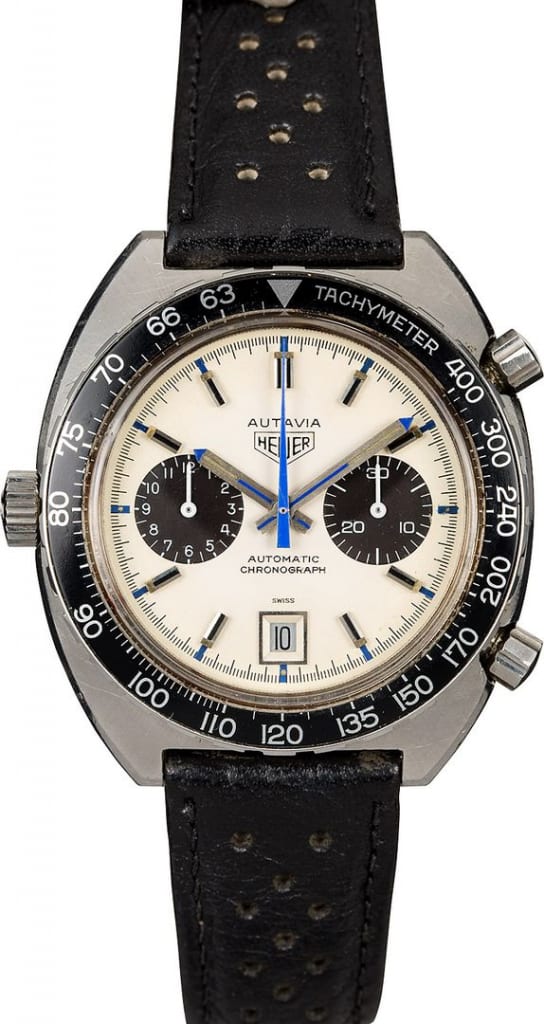
Both the Shelby Cobra car and the Heuer Autavia watch benefitted from developments made only possible by strong partnerships. What’s more, this duo also carries the names of two race car drivers that made permanent marks in the world of motorsports.
Rolex Daytona 116500LN + 2005 Porsche Carrera GT
While Porsche was in the midst of developing a new Le Mans prototype for the 1999 racing season, a rule change caused the automaker to abandon the project. However, rather than shelving the new 5.7 liter V-10 engine, Porsche decided to build a car to accommodate it and the Carrera GT was unveiled as a concept car at the 2000 Paris Motor Show.
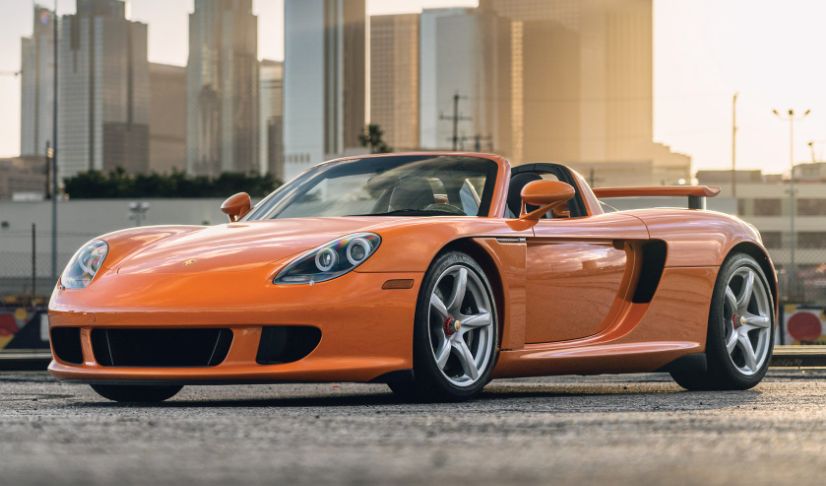
In 2003, the production Carrera GT arrived, roaring from 0 to 60 in four seconds and topping out at around 200 mph. It was the fastest road-going Porsche of its time and had a stunning sleek design to match. Production of the Carrera GT came to an end in 2006 following a change in U.S. standards for road cars. This particular example here produced in 2005 sports a striking paint-to-sample Arancio Borealis color paired with a dark grey leather interior.
2016 was an exciting year for Rolex as the Swiss watchmaker unveiled the much-anticipated stainless steel Daytona 116500LN fitted with a ceramic bezel. The new chronograph model was an immediate success thanks to its seamless combination of a vintage-inspired design executed using modern materials. The tachymeter-marked black bezel of the 116500LN recalls those found on vintage Daytona chronographs, yet they are fashioned from Rolex’s patented scratch and fade resistant ceramic alloy, dubbed Cerachrom.
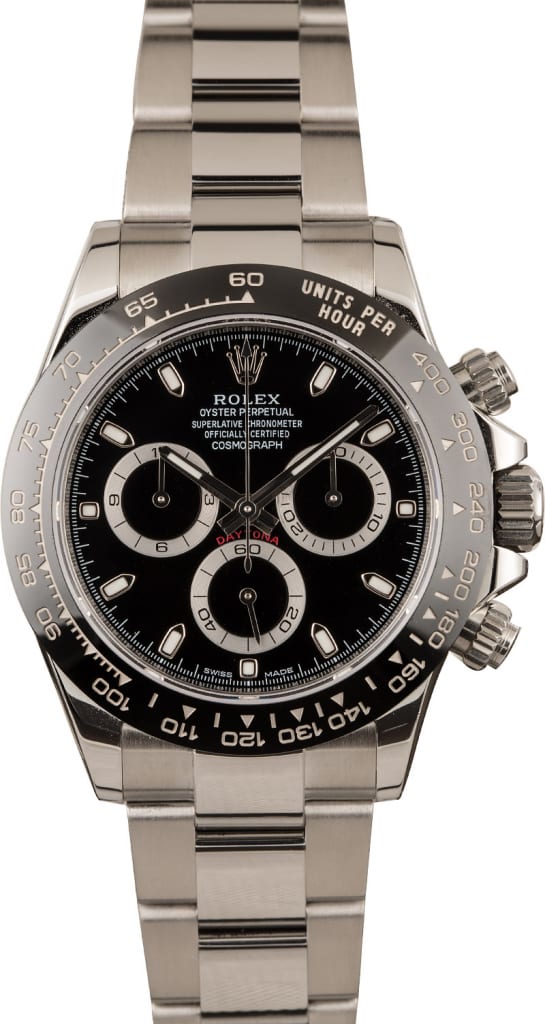
Like all automatic Daytona chronographs, the 116500LN runs on the in-house Caliber 4130 self-winding mechanical movement, prized for its smooth chronograph operation and precise timekeeping. The watch features a 40mm case furnished with a screw-down crown and chronograph pushers to ensure water resistance to 100 meters. The case and bracelet on the 116500LN are fashioned from 904L stainless steel and this particular example houses a black dial to match the black bezel.
The Carrera GT and the Rolex Daytona 116500LN are exciting modern icons of their brands, bringing forth exquisite design and unparalleled performance.
Rolex Sea-Dweller 126603 + 2017 Pagani Huayra Roadster
In 2017, Pagani unleashed the third body style of the Huayra in the form of the Huayra Roadster. With only 100 units made, all examples of the Huayra Roadster were already sold when the car was unveiled to the public. Since this is a convertible model, the Huayra’s signature gull-wing doors had to be replaced with conventional ones. Powering the roadster is a twin turbocharged V-12 engine; 0–62 mph happens in just 3.1 seconds, and the car has a top speed of 310 mph. This particular example, 94/100, flaunts an exquisite fully exposed Black Mamba carbon fiber bodywork exterior paired with a diamond style stitched red leather interior.
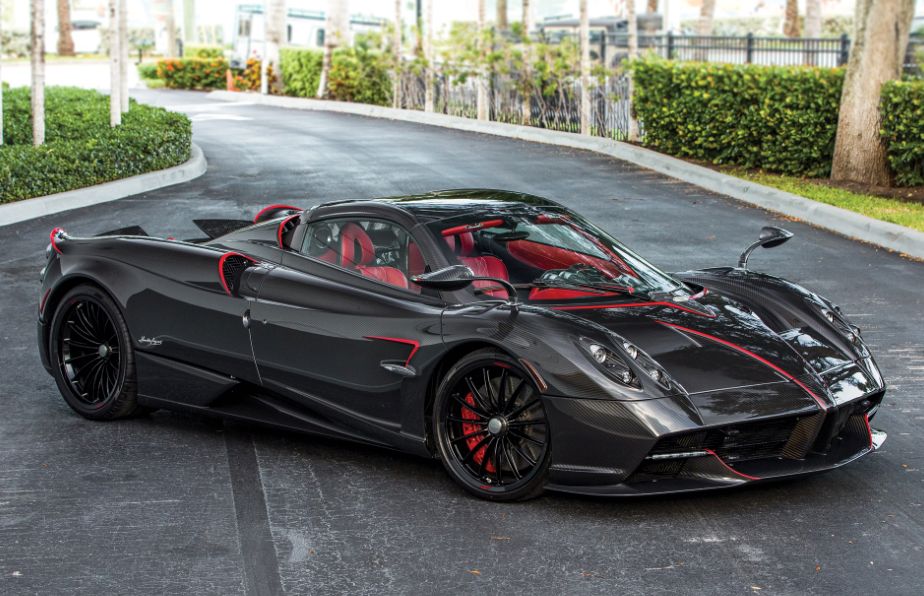
Brand new to the Rolex catalog is the Sea-Dweller 126603, which made its debut at Baselworld 2019. A truly modern iteration of Rolex’s professional saturation diving watch, the 126603 not only features the new larger 43mm case size (replacing the previous 40mm diameter) but for the first time in the company’s history, this is a Sea-Dweller that sports a two-tone 18k yellow gold and 904L stainless steel construction. As is customary with most contemporary Rolex sports watches, the 126603 is topped with a Cerachrom ceramic bezel – in black and gold to match the rest of the watch. This is the second style of the bigger Sea-Dweller model, and thanks to its 18k yellow gold touches, it is by far the most extravagant.
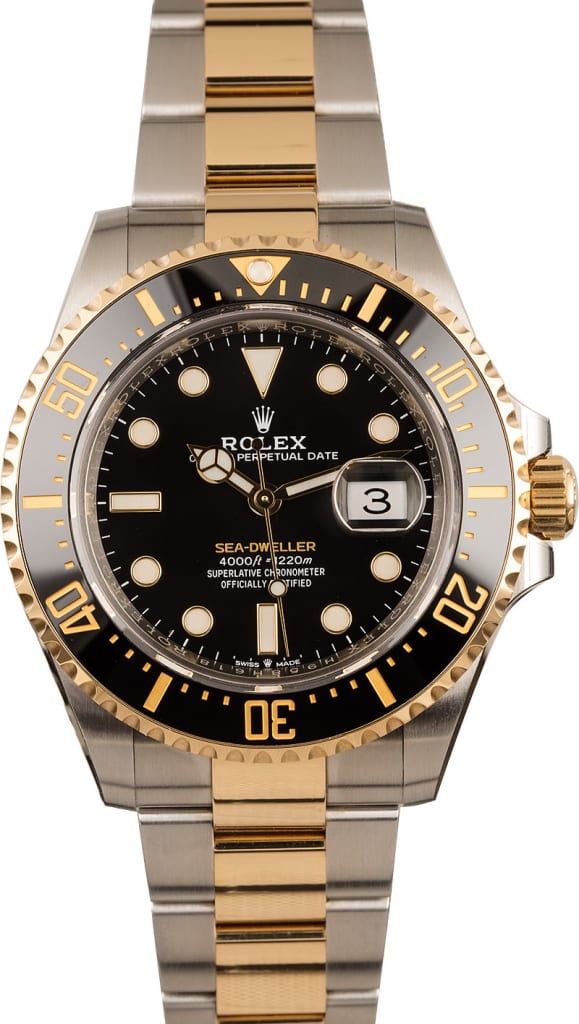
Brash, sporty, and unapologetically luxurious, the Pagani Huayra Roadster and the Rolex Sea-Dweller 126603 each offer a fresh take on the signature models that they are based upon.
Rolex Submariner 116610LN + 2011 Porsche 911 GT3 RS 4.0
The swan song of the 997 generation of 911s, Porsche only made 600 examples of the 911 GT3 RS 4.0 – unquestionably establishing the car’s status as a future collectible. Its 4-liter engine was the most powerful naturally aspirated flat-six built by Porsche at the time of its release in 2011. This particular example, serial no. 009, stands out for being the most expensive example made – built for comedian and avid Porsche collector Jerry Seinfeld. The car is finished in black with a matching black interior, while the wheels were painted in GT Silver Metallic. It must also be noted that this example is the only GT3 RS 4.0 that left the factory with bare carbon-fiber bodywork.

First introduced in 2010, the 116610LN is the current iteration of Rolex’s beloved stainless steel Submariner dive watch. Although it retains the same Caliber 3135 automatic movement and 40mm case diameter as its predecessor, the contemporary Submariner also featured plenty of updates. The “Maxi” dial houses larger hands and hour markers, the “Super Case” silhouette is beefier thanks to the broader lugs and larger crown guards, and it comes with a completely redesigned Oyster bracelet featuring a new diver’s extension clasp. However, the biggest difference between the 116610LN and previous steel Submariners is the use of Cerachrom (ceramic) for its unidirectional rotating dive bezel rather than aluminum. Although the 116610LN has been a part of the Rolex catalog for almost a decade, they are still almost impossible to find in stores due to their extreme popularity and long waitlists.
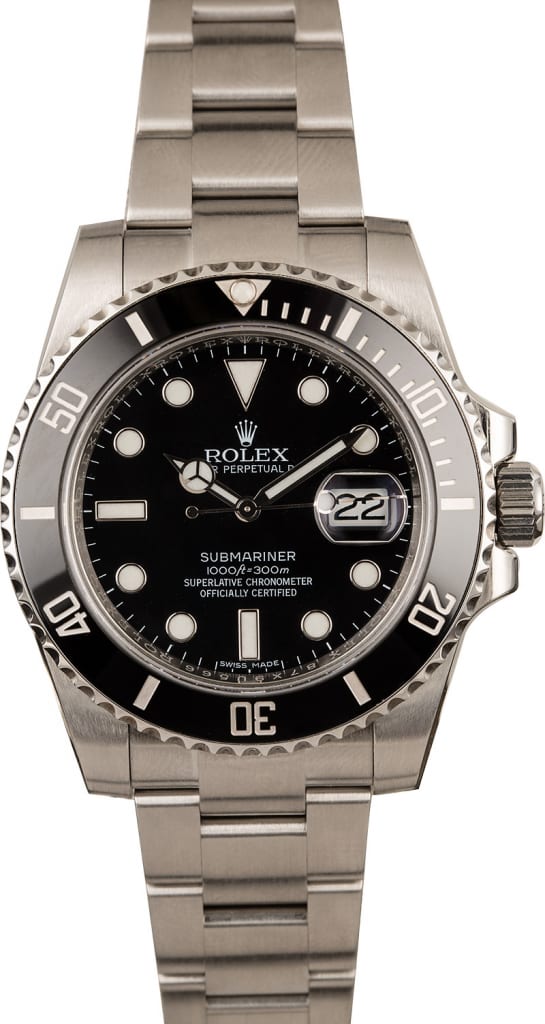
Both sharply dressed in black and silver and each sporting a design language that is recognized the world over, the Porsche 911 GT3 RS 4.0 and the Rolex Submariner 116610LN are modern executions of cherished classics.
Rolex GMT-Master 16758 + 1963 Chevrolet Corvette Sting Ray ‘Fuel Injected’ Split-Window Coupe
To celebrate the Chevrolet Corvette’s 10th anniversary, GM needed to make an ultra special model. And with its revolutionary design and a 327-cubic-inch V-8 fitted with fuel injection and a four-speed transmission, the 1963 Sting Ray “Fuel Injected” Split-Window Coupe from 1963 did just that. Designed by Larry Shinoda (who took inspiration from a concept design called the Q Corvette), the car ushered in the second generation of the Corvette (C2). The distinctive split window at the rear is exclusive to the 1963 models as it was replaced with a conventional one-piece window on following iterations. Around 10,594 coupes were produced for 1963 and this particular model was the 5,345th built.
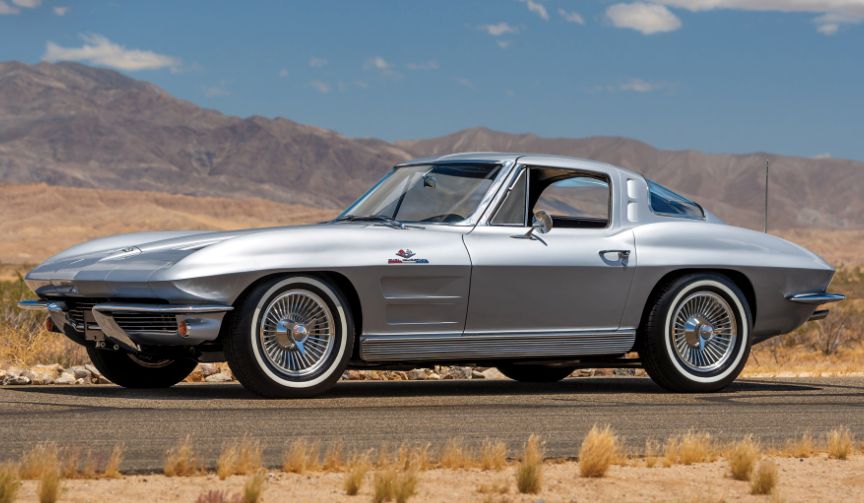
To accompany the robust stainless steel version of its famed pilot’s watch, Rolex also made luxurious 18k yellow gold variations of the GMT-Master. The yellow gold GMT-Master 16758 was first introduced in 1981, and remained in production for a relatively short time until it was discontinued in 1988. Although the steel counterpart of the 16758 was fitted with an acrylic crystal, Rolex opted for modern scratch-resistant sapphire for the crystal on the yellow gold version. Like all GMT-Master models, the 16758 features a 24-hour marked rotating bezel, in black on this particular example, to indicate a second time zone. A glamorous take on one of Rolex’s most famous tool watches, the full-gold vintage Rolex GMT-Master 16758 seamlessly marries everyday practicality and stylish luxury.
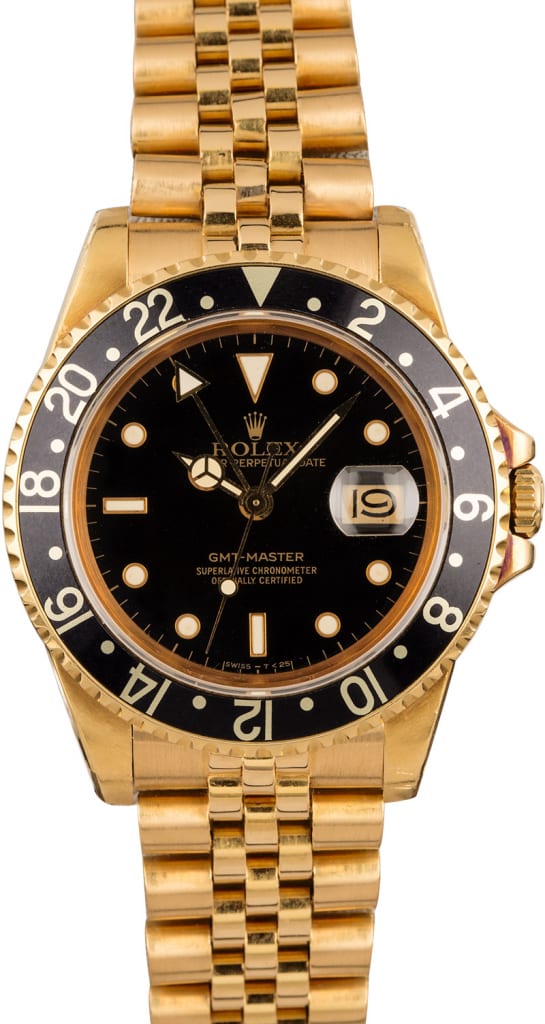
The Sting Ray and the GMT-Master legacies continue today – the Sting Ray has become the Stingray (one word) and the GMT-Master has evolved into the GMT-Master II. Both represent the second chapter of their iconic designs, offering more functionality and perfectly illustrating that great design is paramount to longevity.
Rolex GMT-Master II 126710BLNR + 2019 McLaren Senna
The third addition to McLaren’s “Ultimate Series”, the Senna joined the P1 and the F1 when it made its debut at the 2018 Geneva Motor Show. Taking its name from the late Ayrton Senna in honor of his trio of F1 World Championship (while behind the wheel of McLaren cars), the Senna was developed to be the most track-focused road car the automaker has ever made. As such, the Senna houses the most powerful engine ever installed in a McLaren road car and it accelerates from 0-62 mph in 2.8 seconds and 0–124 mph in just 6.8 seconds. This particular example is serial no. 434 of the 500 examples made, dressed in its stunning “Vision Victory” blue and gray paintwork.
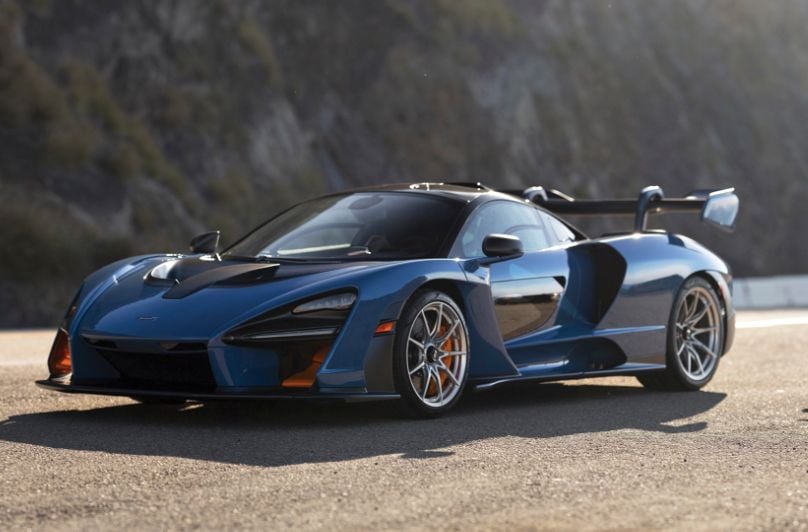
At Baselworld 2019, Rolex released its latest stainless steel GMT-Master II model, the 126710BLNR, donning the coveted blue and black ceramic bezel. This is the second generation of this particular GMT-Master II model, nicknamed the “Batman” by collectors. However, the GMT-Master has a history that dates back to the 1950s when the Swiss watchmaker set out to create a watch specifically for Pan Am pilots to simultaneously keep track of reference time (which was Greenwich Mean Time or GMT back then) and local time as they flew across the skies.
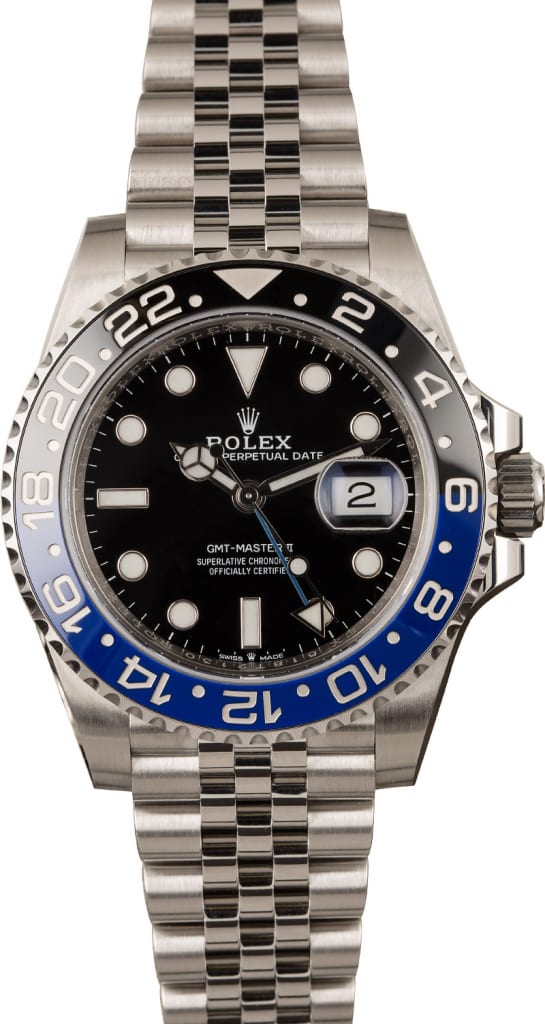
While the 126710BLNR retains the 40mm Oyster case, blue and black ceramic bezel, and black dial layout of its predecessor, new to the model is the dressier five-link Jubilee bracelet (instead of the sportier three-link Oyster bracelet) and the new-generation Caliber 3285 automatic movement inside that provides the watch with an increased 72-hour power reserve.
Not only do the McLaren Senna and the Rolex GMT-Master II 126710BLNR share a similar colorway, but these are also some of the newest products to come out of the automaker’s and watchmaker’s factories, filled to the rim (and bezel) with their latest and greatest technologies.
Omega Speedmaster 145.012 + 1957 Mercedes-Benz 300 SL Roadster
Introduced in 1957, the Mercedes-Benz 300 SL Roadster was an evolution of the iconic 300 SL Gullwing Coupe, designed as an open version with both a foldable soft top and a removable hardtop. Easier to drive and more practical to use than the Coupe, Mercedes-Benz produced a total of 1,858 units of the Roadster until 1963. This particular example is a first-year 300 SL roadster as denoted by its 1957 production date. The car went on to participate in the 2015 and 2016 California Mille rallies, illustrating that despite its age, the 300 SL roadster is beautifully suited for long-distance events.
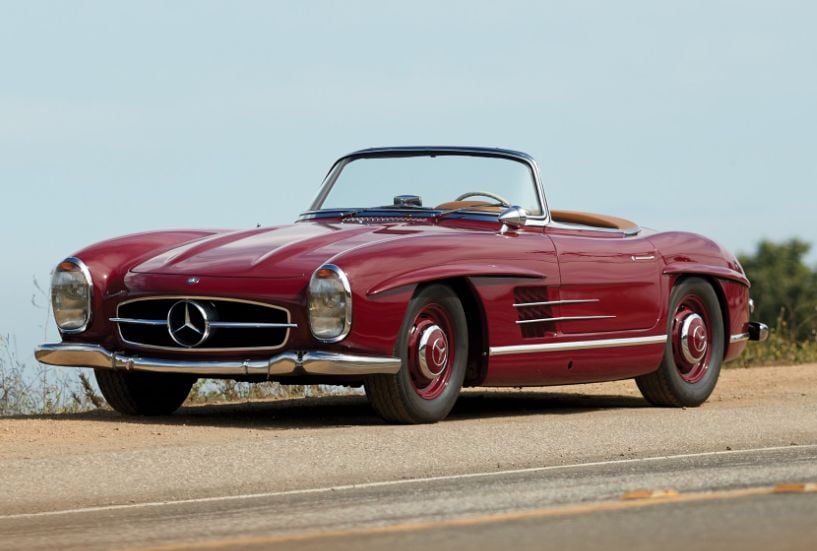
A part of Omega’s venerable chronograph collection, the Speedmaster Professional 145.012 was the very last Speedmaster model to run on the legendary Lémania-based Caliber 321 movement. The 145.012 was only in production for a very short time, from 1967 until 1968 (with a few models, such as this example, delivered in 1969). This 145.012 features a 42mm steel case furnished with the lyre-lug design characteristic to this reference. It also comes with the original black “Dot over 90” (DO90 or DON) tachymeter bezel and black dial with an applied logo. The 145.012 was also the Speedmaster reference worn by more astronauts than any other, and it was issued by NASA to astronaut Michael Collins during the historic Apollo 11 mission that landed two men on the moon.
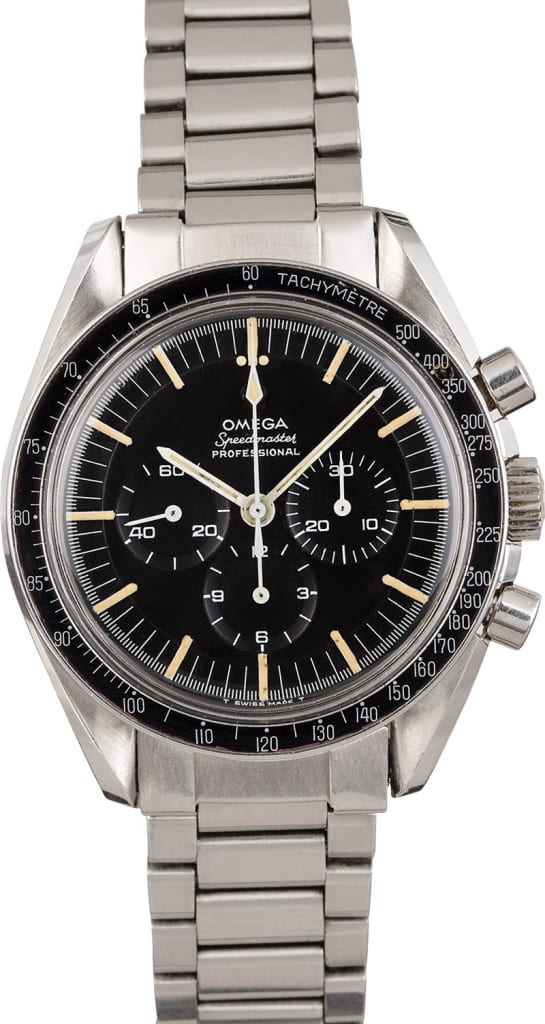
For car enthusiasts and watch collectors respectively, the Mercedes-Benz 300 SL Roadster and the Omega Speedmaster 145.012 are iconic vintage classics that represent a time when products were not only built to last several lifetimes but designed to be timeless in style.
Rolex Daytona 16523 + 1985 Ferrari 288 GTO
While the Ferrari GTO 288 was originally built to compete in the new Group B Circuit Race series (with a minimum production requirement of 200 cars), the race was ultimately canceled. To follow in the footsteps of the legendary 250 GTO, Ferrari pulled out all the stops for the 288 GTO. The car was fitted with a performance-bred 2.8-liter V-8 engine with twin IHI turbochargers, which (with 400 hp) could reach a top speed of 189 mph. The 288 GTO was the fastest road car ever produced when it debuted. This example was the 137th Ferrari 288 GTO built (out of a total of 272 examples made from 1984 to 1987), and it came fitted with some of the best factory options available, including radio, power windows, air-conditioning, red seat inserts, and the Ansa sport exhaust.
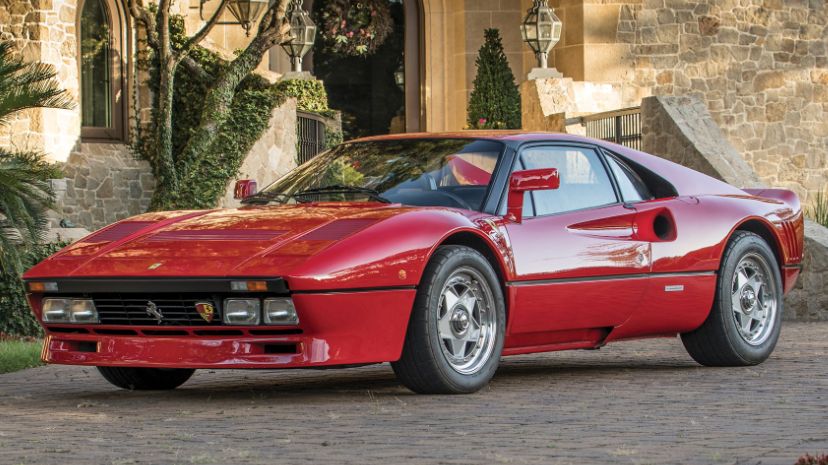
First introduced in 1988, the 165xx series of Rolex Daytona watches was the first automatic version of the company’s signature chronograph collection. The mechanical movement tasked to power the watches, the Caliber 4030, was a highly modified version of the automatic Zenith El Primero chronograph movement. The Daytona 16523 was the two-tone edition of the “El Primero Daytona” lineup, featuring a stainless steel and 18k yellow gold case and bracelet, and topped with an 18k yellow gold tachymeter bezel.
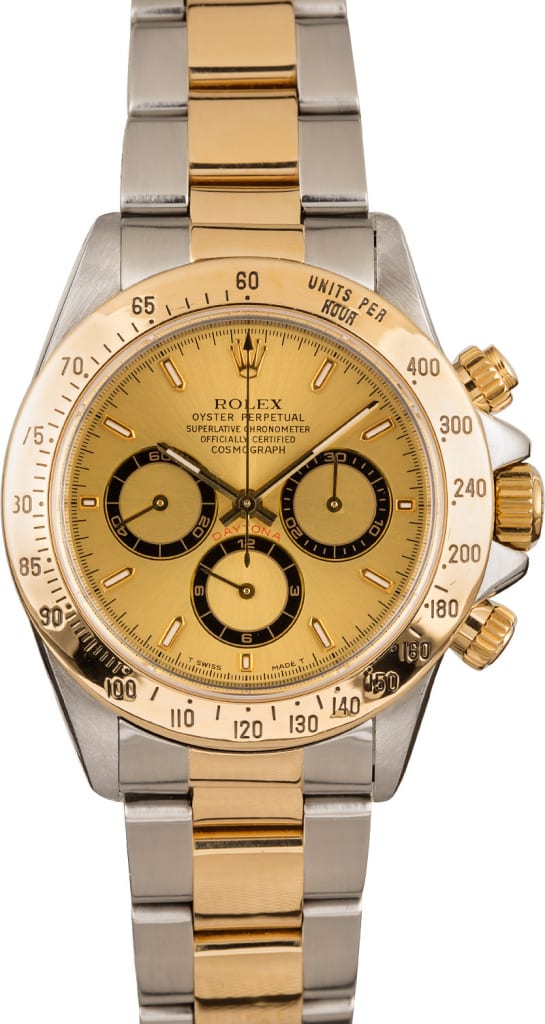
Both born in the 1980s, the 288 GTO was the first Ferrari supercar, and the Daytona 16523 represents the first family of self-winding Rolex chronograph watches. This duo of “firsts” helped define their respective brands and paved the way for a long line of models that came after.
Rolex GMT-Master II 126710BLRO + 1961 Ferrari 400 Superamerica SWB Coupe Aerodinamico
Some of the most significant and celebrated Ferraris ever built, the Superamerica and Superfast series of cars were reserved for only the wealthiest of clients given their eye-popping price tags. Only a total of 17 examples of the 400 Superamerica SWB Coupe Aerodinamico were built, fitted with the latest iteration of Ferrari’s Colombo-designed V-12. Considered as one of Pininfarina’s greatest designs, the elegant and streamlined silhouette of the Superamerica Coupe Aerodinamico stood out for its tapered nose and tail. This exact example graced the cover of the April 1963 issue of Car and Driver, under the headline “We Tested Ferrari’s Superamerica: Wow!”
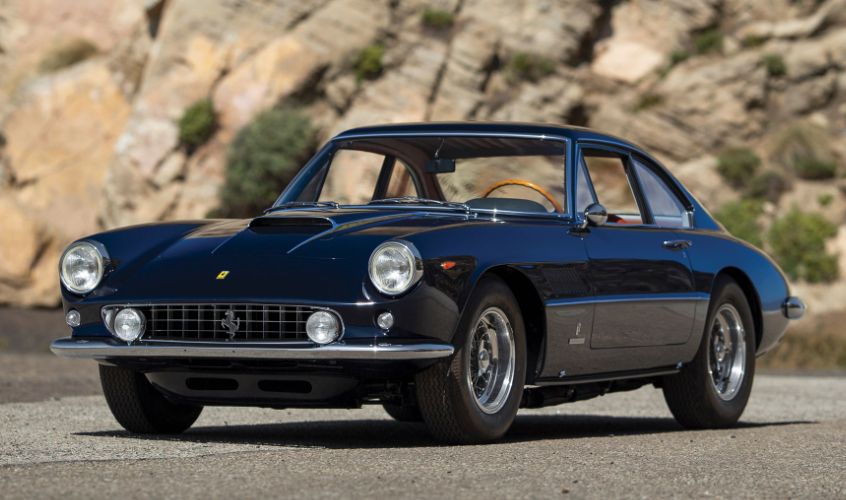
The GMT-Master II line received a major update in 2018, when Rolex unveiled the ref. 126710BLRO. Its release marked the first time a ceramic red and blue “Pepsi” bezel was made available on a stainless steel model. Thanks to its steel construction and classic red and blue colorway, the 126710BLRO unmistakably echoes the design cues of the very first GMT-Master model from the 1950s.
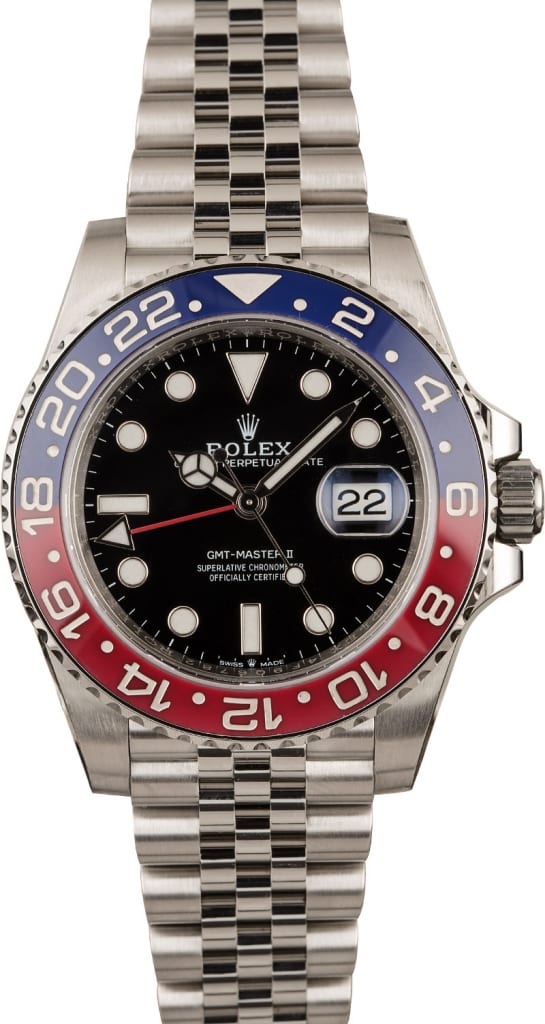
However this being a 2018 release, it comes fitted with Rolex’s most advanced features. Aside from the modern Cerachrom ceramic bezel and an updated Jubilee bracelet developed specifically for this model, the Rolex GMT-Master II 126710BLRO also runs on the next-generation Caliber 3285 movement, offering an increased power reserve of 70 hours, and an impressive -2/+2 seconds per day precision rating.
Even after six decades since they were first introduced, the Superamerica and the GMT-Master stand out as some of the best designs to come out of Ferrari and Rolex.

